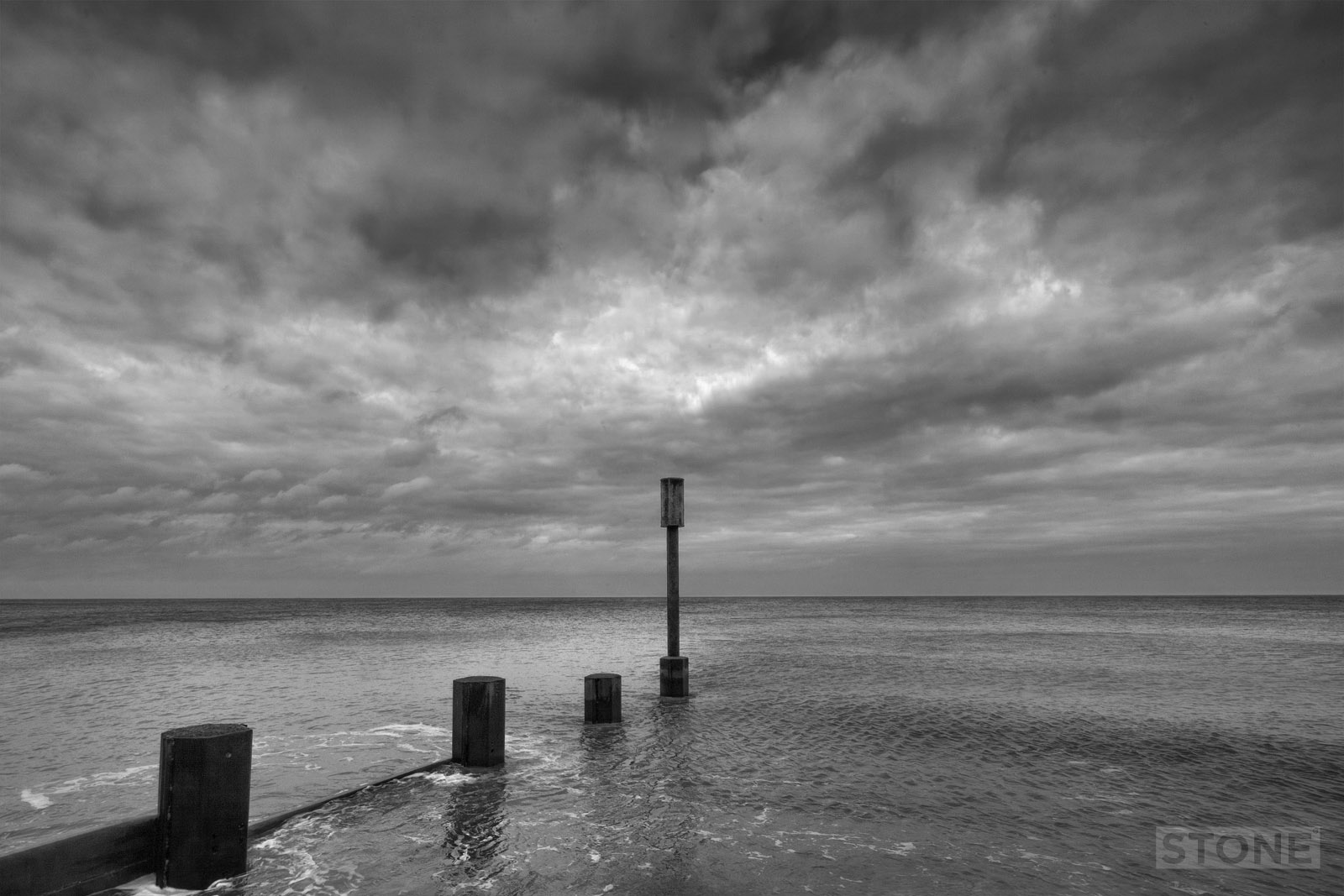
Eccles is one of those oddly forgotten places, it sits at the top end of those curious curved deflection style sea defences, mostly built on top of old concrete sandbag which pre-date the 1953 floods when so much damage was done along this stretch of coast. To the south Palling is one of those ‘local’ beaches, we’ve tended to go there with our kids when they were sandcastle building age, oddly it always seems devoid of many non-local ‘holidaymakers’ a dirty little secret, none of the Leicester and Nottingham accents you tend to get more around Overstrand or the strangled poshness, Hunter’s wellies and gilets you find more along the North coast, this bit was and is ours. There’s always dogs, even in no dog season, annoying jet skis cordoned off in a pall of spray and petrol fumes and people hanging off the ‘you might die if you go on the rocks’ signs. Plus noise, kids, kites, ice cream, cloud and sunburn. This throng thins out towards Eccles, and in the autumn and through to spring it becomes a beautiful little lost land. We used to stay with friends in a caravan in the static park in our skint years, proto-summer holidays when our children were old enough to not care if there was Wi-Fi, strolling down the park to the beach as we saw fit, there were no rock reefs in the early nineties; the beach was much lower, the high tide came right up to the concrete. Occasionally it would scour the beach right down and at low tide you could walk somewhere else, or not knowing better somewhen else.
There is in fact a village under the now banked up sands. I remember asking to Trish whose mum’s caravan we used, ‘what’s that flint thing?’… reply; ‘It’s a church…’ And it was. There were various bits of flint and mortar, but the particular fascination was the stump of the old round tower sitting neatly smack in the middle of the beach, you could stand inside it and look up at the blue sky through the tower that wasn’t there. I found the idea endlessly fascinating and did some metaphorical digging; it’s not just a church, there are roadways, a cemetery, wells and housing platforms all hidden on a clay and earth base under tons of sand. Human remains and graves have been found, coins, pottery, animal bones. There was an exhibition of finds which I typically missed.
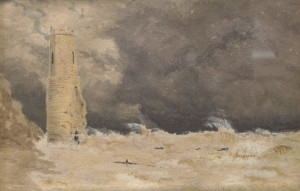 Records show a village of 2,000 acres and 80 households on land was owned by Edward Dane Lord of the Manor of Hapesburc prior to The Norman’s arrival, later held by Le Parker family. The land was fairly continually assaulted by the sea; in January 1604 a surge claimed 66 houses, many of the occupants and 1,000 acres of land. By 1794, despite various attempts at building defenses the church already dilapidated found itself overnight with the tower stuck in the dunes, in 1862 another storm pushed the dunes back and the church was on the beach, less than 100 acres remained. Despite attempts at shoring up, most of the church remainder gave in, the tower remained upright on the beach, flipping the bird at the seething sea. Under assault from another storm it gave up; things happened at around tea time one January in 1895, the high tide blasted through the towers windows as locals watched then when they’d gone to have a nice cup o’ tea and a slice of cake it collapsed breaking in two in the wind and spray. (Chris Weston – ‘Claimed by the sea’)
Records show a village of 2,000 acres and 80 households on land was owned by Edward Dane Lord of the Manor of Hapesburc prior to The Norman’s arrival, later held by Le Parker family. The land was fairly continually assaulted by the sea; in January 1604 a surge claimed 66 houses, many of the occupants and 1,000 acres of land. By 1794, despite various attempts at building defenses the church already dilapidated found itself overnight with the tower stuck in the dunes, in 1862 another storm pushed the dunes back and the church was on the beach, less than 100 acres remained. Despite attempts at shoring up, most of the church remainder gave in, the tower remained upright on the beach, flipping the bird at the seething sea. Under assault from another storm it gave up; things happened at around tea time one January in 1895, the high tide blasted through the towers windows as locals watched then when they’d gone to have a nice cup o’ tea and a slice of cake it collapsed breaking in two in the wind and spray. (Chris Weston – ‘Claimed by the sea’)
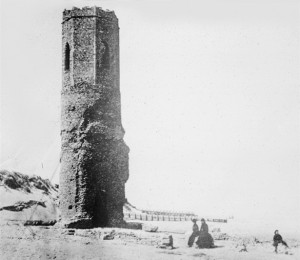 I think this is where my geography A-level borne fascination for erosion and deposition turned into an obsession with desertion. This one is of course special, the sea made it happen, not poor soils, enclosure, agricultural changes or rich landowners being bastards, it’s not the plague, or even spotting somewhere better 500 feet up the road, this is a man against nature thing, something we’ve seen up-close this year with the damage to homes in Walcott, Hemsby and Lowestoft and the war of hydraulic action, abrasion, attrition and solution against shingle banks and concrete ramps the length of the coast. It’s not a new fight, it’s a continuation of an old old battle, one that stretches back as far as the beginning of the Holocene when the glaciers left and the sea rose. So far, Norfolk has lost more than just Eccles; It is but one in a wobbly temporal line of desertion, starting in the South with Newton Cross near Hopton, Winterton Ness, Waxham Parva, Whimpwell which is a relocated ghost, Keswick which remain reduced, Foulness another point lost, the vaguely famous Shipden with it’s hazardous for shipping church tower (which was blown up in the 1890s) and it’s obscure and mysterious sister Clare and the almost untraceable Snittersley. Which makes you think, how many others pre-Domesday settlements were lost? we will probably never have any real understanding of what’s out there, and of course there is a whole drowned landscape under the sea too, occasionally tree stumps appear, hinting at submerged forests of lost Palaeolithic, Mesolithic and Neolithic lands.
I think this is where my geography A-level borne fascination for erosion and deposition turned into an obsession with desertion. This one is of course special, the sea made it happen, not poor soils, enclosure, agricultural changes or rich landowners being bastards, it’s not the plague, or even spotting somewhere better 500 feet up the road, this is a man against nature thing, something we’ve seen up-close this year with the damage to homes in Walcott, Hemsby and Lowestoft and the war of hydraulic action, abrasion, attrition and solution against shingle banks and concrete ramps the length of the coast. It’s not a new fight, it’s a continuation of an old old battle, one that stretches back as far as the beginning of the Holocene when the glaciers left and the sea rose. So far, Norfolk has lost more than just Eccles; It is but one in a wobbly temporal line of desertion, starting in the South with Newton Cross near Hopton, Winterton Ness, Waxham Parva, Whimpwell which is a relocated ghost, Keswick which remain reduced, Foulness another point lost, the vaguely famous Shipden with it’s hazardous for shipping church tower (which was blown up in the 1890s) and it’s obscure and mysterious sister Clare and the almost untraceable Snittersley. Which makes you think, how many others pre-Domesday settlements were lost? we will probably never have any real understanding of what’s out there, and of course there is a whole drowned landscape under the sea too, occasionally tree stumps appear, hinting at submerged forests of lost Palaeolithic, Mesolithic and Neolithic lands.
On Sunday as we drifted and sifted I chanced upon a flint, not uncommon, picked it up and turned it in my hand, a nice old blade knapped, sea-worn and blunted by the shingle maybe washed out of some Neolithic site just off the shore.
Main pictures Nick Stone, Watercolour picture from Castle Museum, artist. Victorian Photograph courtesy Picture Norfolk)
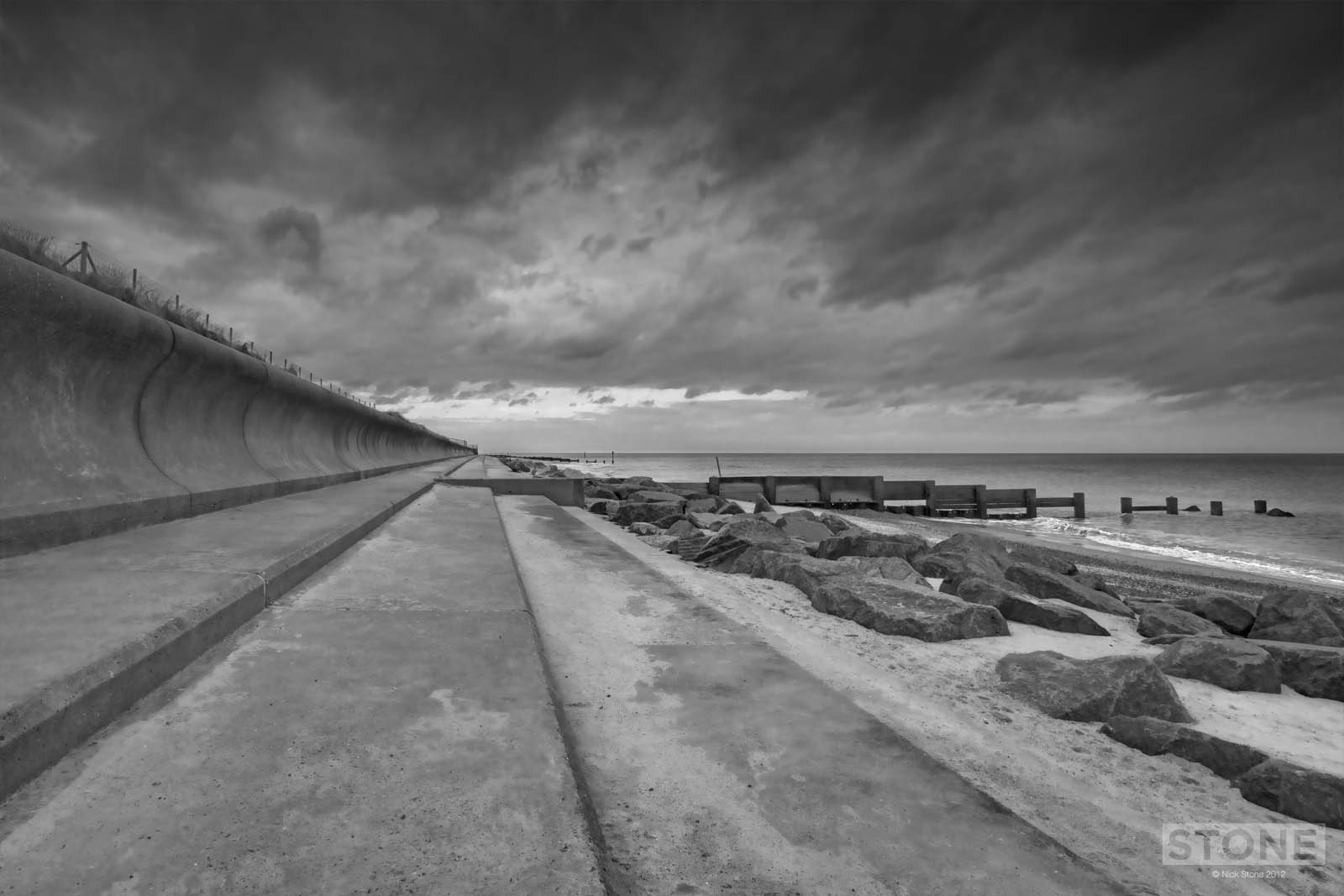
Support Invisible works
Running Invisible works involves considerable outlay, hosting alone costs hundreds of pounds a year. It will remain free with no advertising for as long as I can manage it. If you feel like donating a few quid towards running costs to support it you can do so here.
Buy my work
You can also support the site and get something out of it for yourself by buying some of my work. I try to keep things affordable, there are plenty of options available with prints being expanded into new areas with books and posters also available.
Follow me on Instagram
I put a fair bit of my new work on instagram in various guises. My main account for photography is @nckjstn, but I can also be found mending things, restoring vintage finds and antiques, and making miniatures on my other account @typejunky.

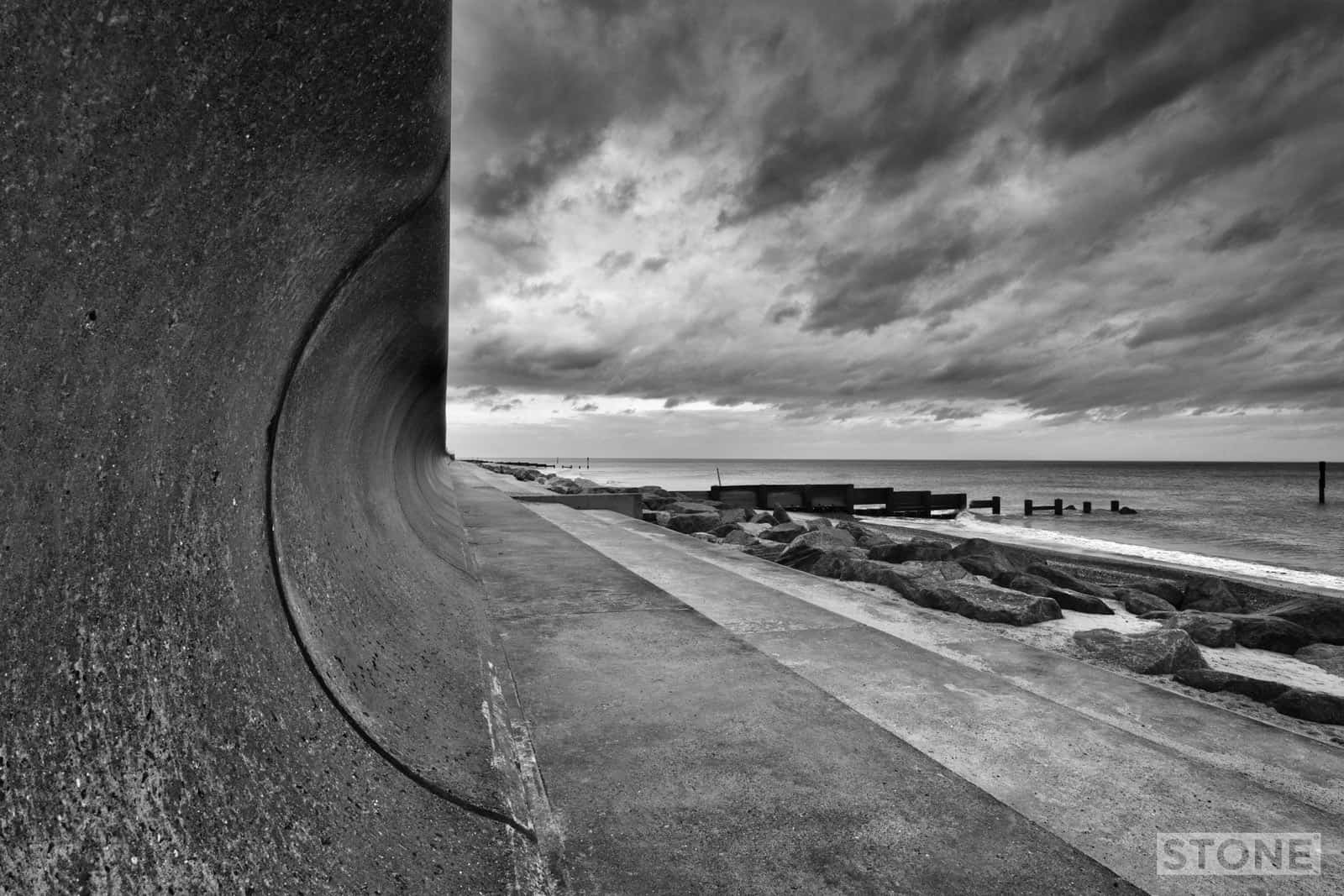
I came across a (sort of) eye witness account of the church tower falling in Ernest Suffling’s “The Land of the Broads” which I’m not sure whether you have seen before? He wrote:
“On January 22nd, 1895, a windy but bright day, I strolled on the beach after lunch, and requiring a light for my pipe entered the old tower and obtained one. Then, standing with my back against the lee side, I watched the shadow of the steeple glide almost imperceptibly over the ribbed sand. For 290 years the old tower had served as a beacon, but I little dreamed that I was the last person who should stand in its shade. Yet so it was, for the 23rd broke stormily, and the sea, even at low tide, prevented anyone from entering the doorway. As the tide rose the tower received the full force of both sea and gale. I watched the great waves breaking in thunder and bombarding the tower with timber, piles, and planks from the demolished breakwaters, and lingered until I could no longer see. Between and 6 and 7 o’clock pm the tower fell, but no one actually saw its fall, nor even heard it, so great was the fury of the storm. On the 24th many persons came to see the fallen patriarch, and each, with myself, agreed that it seemed like standing beside a dead friend, when we gazed upon this well known link with the past lying prostrate before us.”
Another moment of quiet contemplation as I think over the facts and my time spent in Eccles. I used to drive the school bus to and from Eccles many years ago.
Enjoyed reading this and the photo is – as said – unique and eye catching. In exchange…
“What gets me though is that God gives gifts that just keep on giving and giving, and the ocean is like that. I’ve never seen one I didn’t like, and I’d like nothing more than – as per the BBC programme Coast – to explore every coastal shore, rocky cove and sloping strand. For some it’s mountains, or lakes or forests or shopping malls or solar systems that rock their world – for me it’s, well, the beach!”
from blog post – Pacific